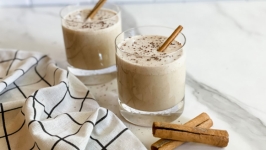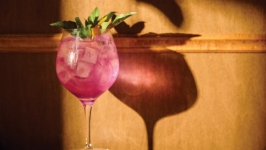Bringing Back Bitters, Shrubs and Tonic
As craft cocktails began their comeback in the early 2000s, gastronomic historians and specialists traced the origins of the potent potions that use apothecary ingredients in classic cocktails.
Created for their presumed healing qualities, these ingredients are piquing the interest of bartenders looking to revisit tradition. These aromatic additions to cocktails have also fostered a DIY culture into the realm of bartending, like pickling, fermenting, home brewing and other artisanal culinary pursuits making a resurgence.
The earliest citation of the cocktail can be found in the 1806 version of Balance & Columbian Repository, where it’s defined as “a stimulating liquor composed of spirits of any kind, sugar, water and bitters” – the key ingredient. Bitters are quite unpalatable when consumed on their own, but their aromatic nature plays a role similar to spices in foods, adding depth and complexity to the final product. Bitters are an essential ingredient in many classic drinks, including the Old Fashioned, the Manhattan, the Sazerac and the Rob Roy.
BITTERS BACKGROUND
In the 1700s, physicians and healers would collect dried roots, barks, seeds, pods, flower buds and fruits, and preserve them in alcohol to be consumed as remedies for circulatory or digestive ailments. Since these concoctions didn’t go down easy, people started mixing them with liquor. By the end of the 19th century, bartenders had more than a dozen brands of bitters at their disposal.
Only two known brands, Angostura and Peychaud’s, withstood the test of time. They’ve been recently joined in the market by a number of brands that have revived classic styles, including Fee Brothers, Regans’ Orange Bitters No. 6, The Bitter End and The Bitter Truth. The more experimental modern takes have brought into the limelight such ingredients as celery, rhubarb, grapefruit and maple, and flavors like BBQ, Aztec chocolate, mole and Creole.
Mixologist Nick Nistico of Premier Beverage Company developed his own chocolate-infused recipe, Sexual Chocolate Bitters. “I really love chocolate bitters and most of the ones on the market did not meet my standards.” he says. “I was making a great homemade recipe and sharing it with friends. We realized it was much better than most brands on the market in our opinion, so as a gift to bartenders and friends I took it into production.” The bitters have appeared in drinks at Lure Fishbar, Macchialina and The Regent.
SHRUBS & ELIXIRS
Another popular ingredient in cocktails, the shrub, was created as a means of preserving fruit long past its picking. Tart and sweet, the versatile shrub is acidulated in nature, its pH scale depending on the fruit juice used and the addition of vinegars. Craftier connoisseurs have begun fermenting their own vinegars by using alcohol that steeps with the fruit, acid and sugar, as well as wild yeast birthed from an organic fermentation process. “House-made ingredients make all the difference,” says Chris Norton, head bartender of Albert Trummer’s The Drawing Room at The Shelborne Wyndham Grand in Miami Beach. “They can turn good cocktails into great cocktails. Being able to create bitters, infusions or ‘elixirs’ from scratch, you have the ability to use only the highest-quality ingredients possible, and it directly enhances the cocktail.”
And that’s exactly what they’re doing at the new experimental cocktail lounge: house-made elixirs and “medicinal” concoctions that divide the cocktail list into “House Medicine” categories called stress relievers, pain killers, aphrodisiacs and stimulants. One summer menu item, a green apple and rosemary elixir, recreates the sensation of biting into a tart Granny Smith.
TASTY TONICS
Making a comeback in cocktail menus is the tonic. Original created as a remedy to combat malaria, bitter quinine was tempered with soda water and lime, eventually patented in England in the 1850s as “tonic water.” Today, this carbonated soft drink is part of the popular Gin and Tonic and other variations.
One bartender fascinated with this ingredient is Tyler Ridgeway, from the new cocktail lounge, Repour, at the Albion Hotel in Miami Beach. His enchantment with the medicinal concoction can be traced back to his origins in the craft cocktail scene, when he worked as the head bartender for the now-closed Khong River House. “I was inspired by Josh Holliday’s tonic program with the 67-plus brands of gin we carried,” he remembers. “When I took the lead, I decided to continue the program and got interested not only in the history and medicinal features, but in finding new components that would create different flavor profiles for the popular drink.”
At Repour, bartenders are encouraged to use their creative freedom to collectively design the rotating cocktail menu. Ridgeway has continued his tonic crusade and expanded the summer menu to include two house-made tonics to add to the G&T. After all, summer is the perfect time for this refreshing cocktail.











